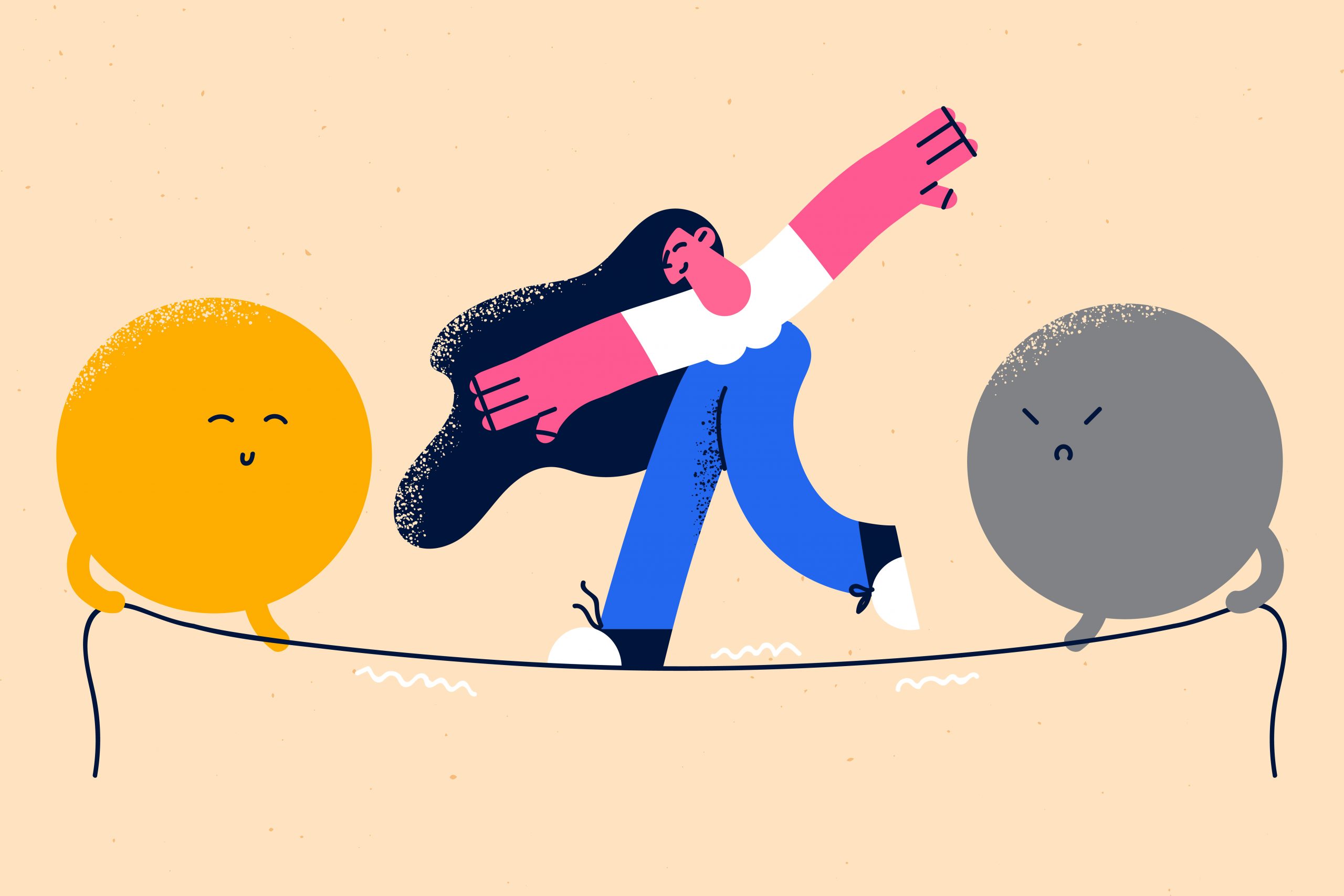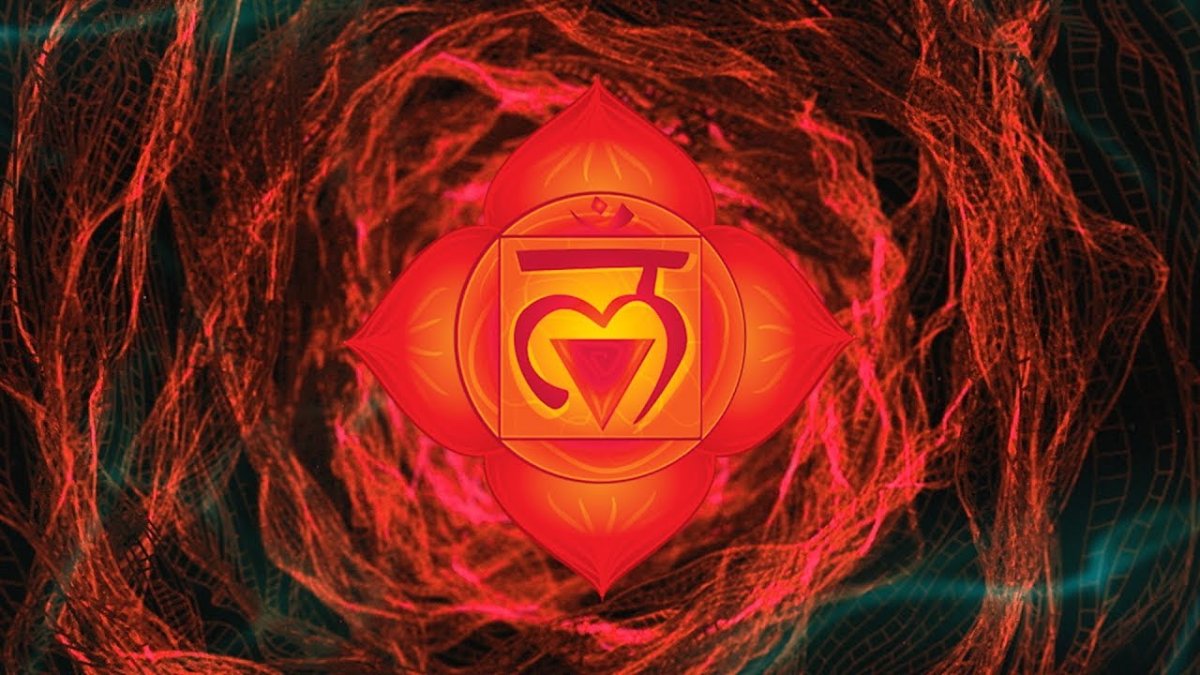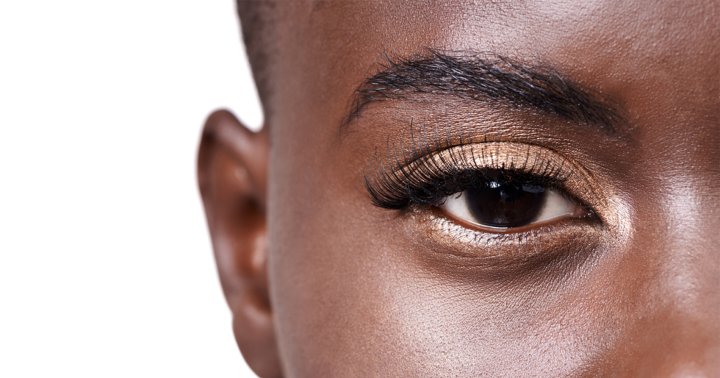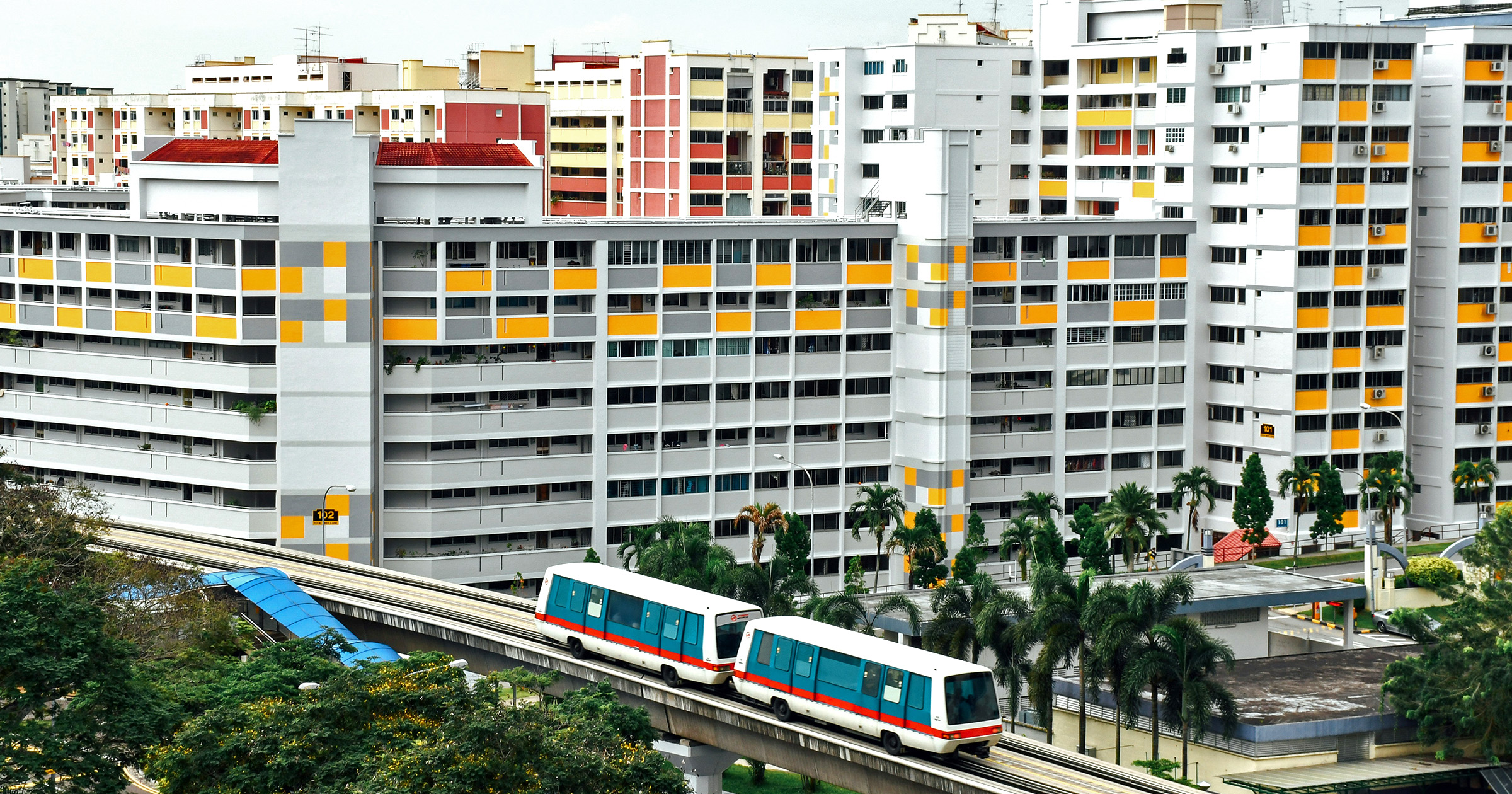Zen in the Age of Layoffs
Finding ancestral wisdom in groundlessness The post Zen in the Age of Layoffs appeared first on Tricycle: The Buddhist Review.
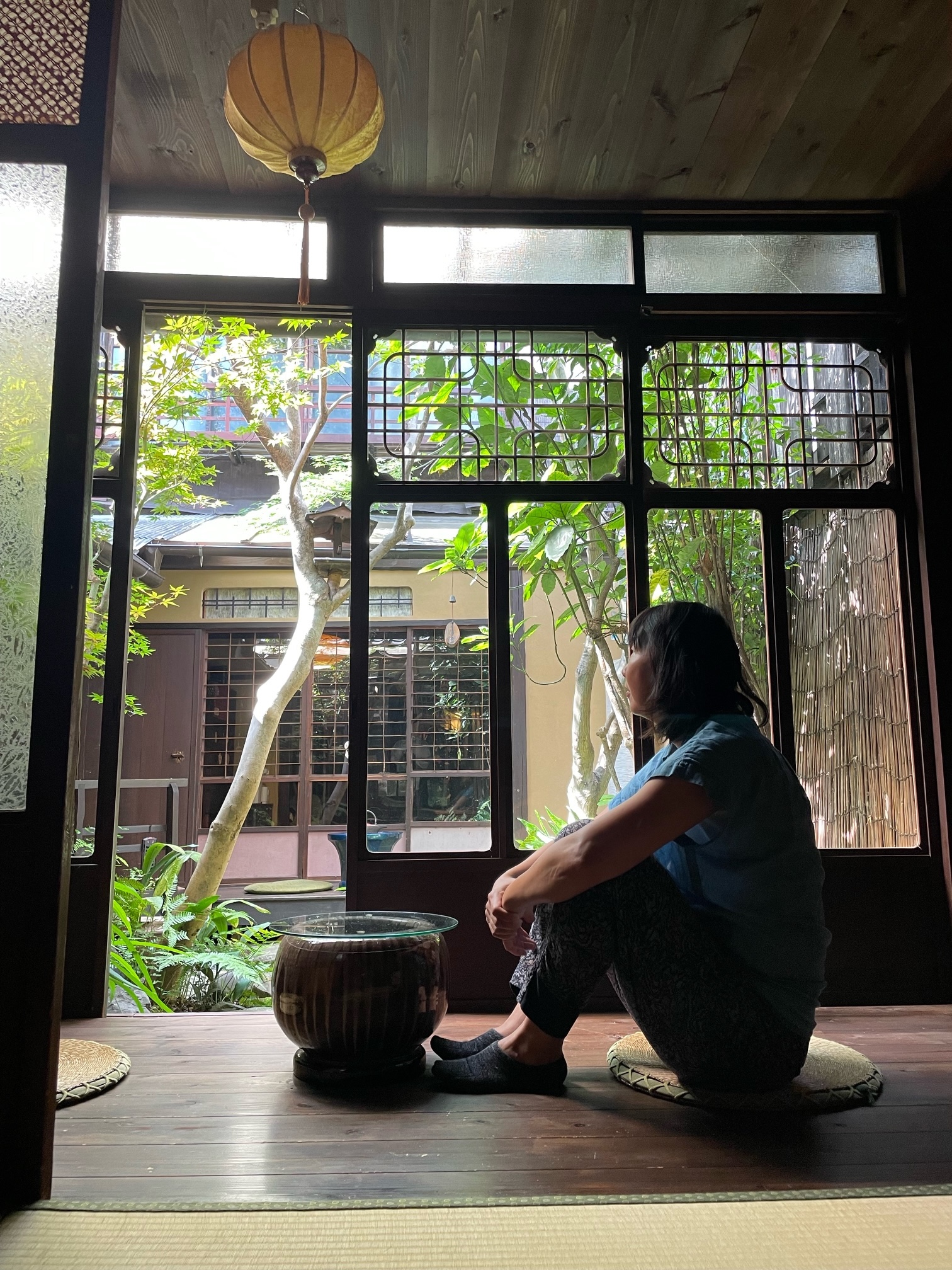
The day began like any other—a fresh cup of coffee in my company mug, settling into my home office. Ping! A Slack message from my boss. “Can we meet early?” Of course, I replied. My mind ran through the usual list of tasks. A press release? An urgent LinkedIn post responding to new regulations? Such drills had become commonplace in our financial technology world, still reeling from Silicon Valley Bank’s collapse.
I joined the Zoom call, unprepared for how swiftly life can pivot. Her words came, wrapped in apology: layoffs. My entire department, my boss included, half the company—gone. Numbness washed over me as I watched the scene unfold from somewhere outside myself.
Just weeks prior, we’d gathered for an all-hands retreat in California. We strategized, rallied, and bonded. I loved my team and the startup company I worked for. I was committed to our path forward. Yet in an instant, that carefully constructed world evaporated.
Anger seemed pointless. The numbers didn’t lie, and our entire industry was under siege. There was no one to blame, just the harsh reality of an economic landscape shifting beneath our feet.
I took a deep breath, feeling the press of my feet against the floor, anchoring myself in this new, uncertain present.
I wandered into the living room, to tell my sister and her family, who were visiting. “Well, guess what? I just got laid off,” I announced, the words feeling heavy on my tongue. The reality hadn’t sunk in yet. My brother-in-law was there, too, and he had been laid off from Facebook the year before. It was the new normal in tech—a feature of modern life.
After relaying the sparse details I knew, my sister said: “Hey, you’re going to have time now. Come on our Japan trip this summer. Just crash in our room.” Still in a daze, I agreed, my suddenly uncharted days stretching before me like an unfamiliar landscape.
A
primal part of my brain kicked in—planning, stressing, producing cortisone—preparing for survival. I thought of my ancestors, their DNA coursing through me. What trials had they faced? Running from woolly mammoths, fleeing wars, enduring famine? Somehow they managed to survive and nurture offspring, in an unbroken chain stretching back to the dawn of time. Their hardiness flowed in my veins, yet this modern trial felt uniquely bewildering.
They never knew this particular flavor of hell—the sudden severance of livelihood that sets you adrift in a sea of emails and LinkedIn connections.
I sought wisdom from my teacher Valerie Forstman at Mountain Cloud Zen Center. I shared my shock, disappointment, and fear. “And yet, you’re still alive,” she said simply. I sat down on the cushion in the zendo, facing the adobe wall flecked with straw, awash in groundlessness, my mind galloping for solutions, desperate to cling to a comfortable narrative.
H
ow would I survive? Remote jobs were scarce, and reaching out felt vulnerable. My identity as a working person crumbled. The job market was ruled by applicant tracking systems (ATS)—computer algorithms that reduced your life experiences to a computer-generated score. If your résumé didn’t match the right key words, your résumé was never even seen by a human. Job descriptions were awash with tech jargon: “cross-chain enabled architecture,” “GTM strategy for increased ROI,” “cloud-based B2B management software.” The negative voices shouted in my ears as I tried to adjust the wording on my résumé to match each job description, “Why are you even bothering to do this, it’s fruitless!” Each application was an exhausting tug-of-war with myself.
As part of the application process, one mental health app company gave me a take-home assignment to put together “a comprehensive content strategy to increase website traffic from 35k to 500k monthly”—an exercise that, frankly, seemed detrimental to my own mental health. Do you have to be the Second Coming in order to get a job in this climate? How would I find my place in this world of buzzwords and bottomless expectations?
My teacher said: “Not knowing is the most intimate.” Stripped bare of all titles and livelihood, I was incredibly vulnerable and, on top of that, my body followed suit. Middle age asserted itself, reshaping me physically. My feet grew half a size larger, as if preparing for a new path. Tendons recalibrated one by one, breaking and resetting—a thousand natural shocks of a body changing. If it wasn’t the shoulder, it was the ankle, and when both of those healed, some other ailment would mysteriously appear. It started to feel like my body was held together only by safety pins, and every day that I woke up relatively intact felt like a gift.
Suddenly, I saw the world through softer eyes. At the store, at crosswalks, my heart ached for those limping along. “They’re still going,” I thought, “still living their lives despite the pain and suffering.” The temporality of existence became visceral. In the rawness of my state, I felt a kinship with all those who were braving the crossroads of uncertainty. The veil between life and death grew more diaphanous, more sheer, and I could glimpse with greater lucidity the tenuous and astonishing existence we all partake in—the joys and heartaches, the fragility and fortitude, the utter juiciness of each fleeting moment.
“How will this turn out?” I wondered, echoing a question my ancestors must have asked countless times before.
Y
et, amidst the chaos, an invisible pattern emerged—a thread I can only call grace. It was there in my past—the times when I walked away from a car accident mostly unscathed or recovered from divorce, rebuilt my life, found love again, and made a home in a new city. These moments of grace must not be forgotten. I had to remind myself: I don’t have to figure it all out alone.
Trusting in the dharma, I realized that as long as I do my part in humble acceptance, all the while simultaneously holding my fragility and strength, unexpected gifts can appear. The job title, the illusion of security—all empty. What remains when the facade crumbles? Family, friends, sangha.
I looked out my window, pausing to witness spring unfurling around me. The arroyo behind my house awakening, bursting with new life. The Sangre de Cristo Mountains catching the sunset, painting the sky in shades of cotton candy and glacial springs, then blood orange and woodsmoke. Hummingbirds flitting between cacti blooms. My friendly neighbor offers me squash and eggplants from her garden. At the park, a little girl’s smile flashes as she pedals by in her pink bike.
I did the dance—interviews, résumés, networking emails, unemployment forms, state health insurance applications, job rejections—I powered through them all. Each “no” a stepping stone to starting over: a new résumé, another round of interviews. The cycle continued.
And every morning, I returned to my meditation cushion. “Stay open,” I inhaled. “Don’t close off,” I exhaled. The wall, steady and unchanging. Breath, rising and falling. My teacher’s words resonated: “And yet, you’re still alive.”
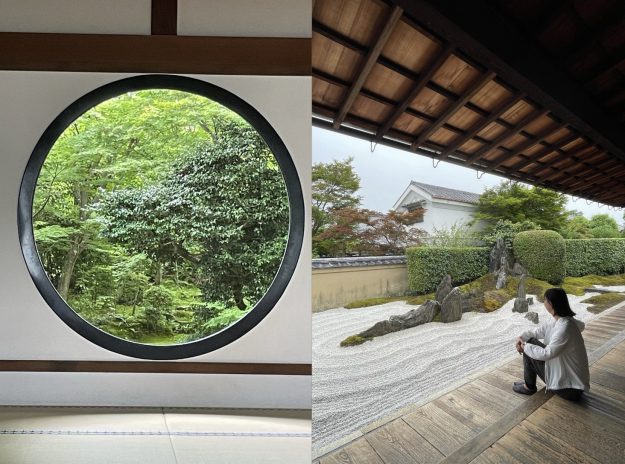 Left to right: Zen temple window; the author sits by a rock garden at a Zen temple. | Photo by Daisy Lin
Left to right: Zen temple window; the author sits by a rock garden at a Zen temple. | Photo by Daisy LinA
couple of months later, I found myself in Japan, joining my family in a whirlwind of new experiences. Tokyo dazzled with its riot of lights, Hello Kitty, and ubiquitous convenience stores offering onigiri in eight flavors. Beppu’s hot springs and marina, Kumamoto’s spectacular samurai castle—each place a new world to explore.
Then, I set out alone, drawn by a memory of a Pico Iyer essay I’d read years before. It described a holy town in the mountains of old Japan, filled with hundreds of temples where Buddhist pilgrims could stay overnight. Now, untethered from my old life, I felt called to this otherworldly place.
Koyasan emerged from the mists of memory and materiality, hushed and deeply wooded, nearly deserted after dinner. Creepy and spirited, it whispered of centuries past. My temple lodgings, once home to an ancient noble family, offered tatami rooms overlooking a Zen garden. The meditation hall, dim and mysterious, glowed with molten bronze chandeliers and Buddhist symbols.
This mountain, the birthplace of Shingon Buddhism, had once been deemed so hallowed that women were forbidden to enter until 1872. The women, undaunted, built a small shrine outside the gates so they could continue to practice. I thought of my grandmother, of all the women before me who had been denied access to places of power. How would they have felt, standing at the threshold of something so close yet unreachable?
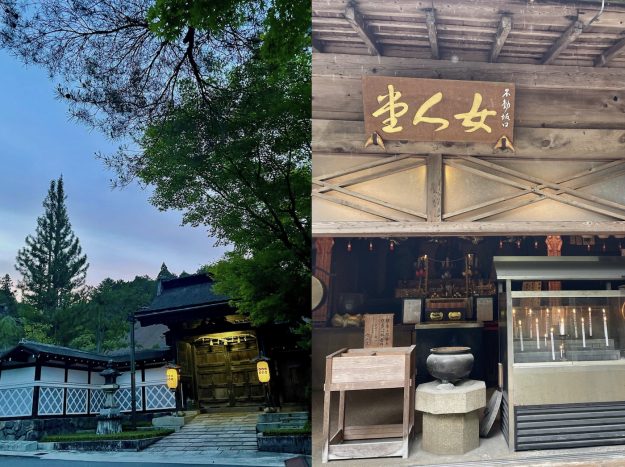 Left to right: A temple in Koyasan where the author stayed; the shrine outside of Koyasan. |
Left to right: A temple in Koyasan where the author stayed; the shrine outside of Koyasan. |Photos by Daisy Lin
At the edge of town was Okunoin, Japan’s largest cemetery, stretching two kilometers long. Feudal lords, monks, and children lost too soon rested here. Mossy headstones rose in five tiers, silent sentinels among towering pines. Each five-tiered stupa represented the elements of life: earth, water, fire, wind, and space.
As I practiced qigong among the headstones, I felt the presence of countless lives lived and lost. What wisdom did they hold? What stories could they tell? I thought of my ancestors, of the singular string that led them to me—a woman now free to roam these once-forbidden grounds—educated, resourceful, independent.
Did they see me coming, these ancestors of mine? Could they have imagined a descendant like me, navigating job loss and reinvention in a digital world of social media, artificial intelligence, and climate change?
T
he crisp mountain air filled my lungs as I kept walking. At last, I reached the mausoleum of Kobo Daishi, the founder of Shingon Buddhism, believed to rest there in eternal meditation, awaiting the Buddha of the Future while offering solace to seekers.
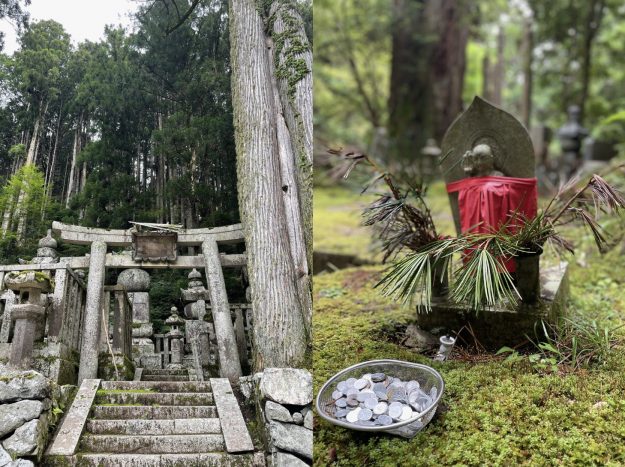 Okunoin Cemetery. | Photo by Daisy Lin
Okunoin Cemetery. | Photo by Daisy LinI crossed the bridge, entering a hushed complex where photography was forbidden. Inside Torodo Hall, twenty thousand eternally lit lanterns lined the ceiling, shining upon sacred golden objects on dark wooden tables. Muted paintings lined the back wall, barely visible in the dim light.
As a memorial service began, I wandered outside. Behind Torodo Hall, Kobo Daishi’s mausoleum rose on a hill, framed by white gilded gates. At its base, dozens of colorful flower arrangements, each hung with a white satin banner and kanji characters, created a tapestry of devotion.
I lit a candle for my ancestors, then several green sticks of incense. As fragrant smoke curled around me and chanting filled the air, I spoke to those who came before me: “Dear ancestors, all your struggles, joys, toil, and moments of transcendence live in me. Thank you. May you be healed, may you be well. I am alive, I am here, I am free.”
While meditating on a nearby bench, I felt the centuries coursing through my body, buzzing in my fingers and toes. When I slowly opened my eyes, the first thing I saw was a white banner hung squarely before my eyes, its message striking:
林 Lin (my last name)
爱 Loves
子 Child / Offspring
Everything froze as the words reverberated in a liminal part of my core. In that electrifying moment, it felt like a direct transmission from my ancestors—all the centuries compressed into a single, illuminating bang. “We are all living and healing through you, we love you,” they seemed to say.
I can’t explain this beautiful moment that lit up my path with sudden clarity. But standing there, unbound, I felt connected to all those who had forged new paths before me when old ones closed—from the women once barred from this mountain to my ancestors who survived through the ages.
In this ancient place, my own journey seemed part of a larger story, one of resilience, and a reminder that I, too, could find my way forward. One breath, one step, one reverent moment at a time. I was searching, yes, and I was undeniably alive.

 UsenB
UsenB 







